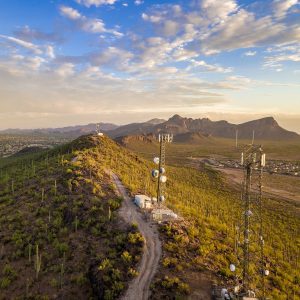One of the best ways to make sure the design of your refinery is going to look and perform the way you think it should is to perform front end engineering design (FEED) dynamic simulation studies. This truly necessary phase of simulation modeling may save you from building a flare taller than the Eiffel Tower in the middle of your refinery. Don’t laugh – it almost happened.
Oil Refinery at Sunset/CorbisDynamic simulation is often only considered for controls checkout and for operator training. However, there are great benefits to be realized by applying dynamic simulation early on in the process lifecycle. For example, conventional methods of flare sizing are conservative in nature but conservative assumptions often lead to unnecessary overdesign, such as calculating that the flare must be as tall as the Eiffel Tower. First principles rigorous simulation helped an engineering company correctly size the flare for all anticipated scenarios and trim 20 million euros off the capital expenditure.
A dynamic simulation model can be developed along with the plant design and evolve throughout the project execution. This saves money at every stage of the process lifecycle from design on through to operations. This is much better than designing and then crossing your fingers in hopes that the plant performs as intended. The benefits and savings from performing a dynamic simulation study early on during the design, before capital expenditure is committed, can be substantial. The model used during the design phase then becomes an asset that grows and can be reused later for further benefits at a relatively insignificant cost.
This blog is the first of a five-part blog series will begin to enumerate the benefits of Dynamic Simulation applied throughout the process lifecycle.
Let’s start with the first part of the plant lifecycle – Front End Engineering Design. The following benefits can be realized using dynamic simulation early on in the design phase of a new project, whether it is a greenfield project or brownfield retrofit:
Optimized Equipment Sizing and Costs
- Plant design must consider transient operating conditions such as start-up from cold-metal on up to full capacity, abnormal situations and plant shutdown. For example, dynamic simulation can evaluate the effect of vessel or flare header packing. Packing may reduce the back-pressures in a flare – particularly for depressuring or staged relief load. This can highlight that a smaller flare would be sufficient which could save millions of dollars in capital expenditure
- Dynamic simulation can also validate the design of regular “smaller” equipment items that can have a detrimental impact on the plant if not sized correctly. For example an incorrectly sized anti-surge valve can fail to prevent surge potentially leading to equipment failure on major rotating equipment. Alternatively, an incorrectly sized electric motor on a compressor may have insufficient horsepower to allow a hot restart of a compressor at settle-out pressure.
Correct Equipment Line-up and Instrumentation Location
- First of a kind plants or plants that are tightly heat integrated can be difficult to design and operate. Dynamic simulation can be used early on during the design phase to check that all auxiliary lines and start-up equipment are included and correctly sized and their operation correctly incorporated in the start-up procedures before the plant gets to commissioning. Discovering additional equipment is needed or equipment is incorrectly sized can cost millions of dollars if only discovered during live commissioning and not early on in the design process.
These are just some of the many benefits of applying dynamic simulation early on in the design phase. Please feel free to reach out to me if you would like any supporting information or have specific questions whether dynamic simulation would make sense on your project.
In the coming weeks, look for additional blogs which will help round out a holistic look at the benefits of dynamic simulation. Take a quick look at the series.
- Engineering Studies for Design Validation – thanks for reading!
- Dynamic Simulation to Support Controls Pre-commissioning /Controls Checkout
- This blog will discuss how the above FEED dynamic simulation model can be enhanced and integrated with the DCS, ESD/SIS & PLC control systems to support controls pre-commissioning. All plant controls can be checked out in a safe environment prior to site commissioning which often cuts days or weeks off planned commissioning times.
- Workforce Optimization Through Operator Training Simulators
- Once the control configuration is validated, startup scenarios can be tested in the simulator, without the risk of lost production or increased downtime, to ensure plant operability. This blog discusses how an OTS can allow the operators to start receiving training long before plant construction is completed.
- Plant Crew Training – Integrated Board Operator and Field Operator Training
- Operations staff directly impact safety, availability and profitability. Field and control room operators must work together as a team to ensure the plant remains on-line, produces the desired end-product without any incidents that would put the facility or locale at risk. This blog will discuss how an Operator Training Simulator can be connected to a 3D Virtual Reality representation of the plant to allow full plant crew training in a safe environment. “Practice makes perfect” as they say. Practice in a safe environment doubles the benefits.
- Corporate-wide training through Simulation
- The simulator envisioned at the design phase still can add additional value beyond the control room once the plant is up and running. This blog will discuss how simulators can be utilized to provide unique one-of-a-kind training experiences for almost all employees in the facility or even perhaps in your enterprise.



